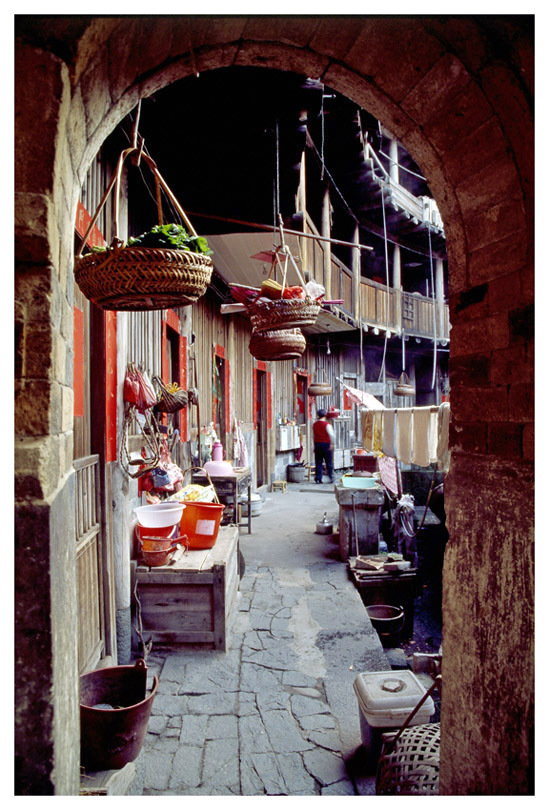'Black UFOs' In Fujian Mountains
Updated: 2007-05-16 08:54
Hundreds of people share communal houses
The earth buildings are group-oriented residences with dozens or even hundreds of rooms. Two thirds of the houses are used to accommodate roughly 20 families or a clan of hundreds of family members and each family occupies one vertical unit. Some buildings don't have an open round hallway; instead each family has its own private staircase.
The earth buildings are made of earth, stone, bamboo and wood, all readily available materials. After constructing the walls with rammed earth; branches, strips of wood and bamboo chips are laid in the wall as "bones" to reinforce it. The result is a well-lit, well-ventilated, windproof, and quakeproof building that is warm in winter and cool in summer.
Miniature fortified castles
As most Hakka traditionally lived in the mountains, these communal houses made of compacted earth were built to provide protection against bandits and wild animals - almost like small fortified castles. Earth buildings are mostly distributed in Yongding, Nanjing, and Hua'an, but the largest concentration and some of the most spectacular buildings are in Yonding County.
The older earth buildings usually consist of an inner ring surrounded by a large outer ring. The main entrance doors are padded with iron sheets and the walls are usually about 1m thick. There are observation holes above the entrance doors with lookout and defense platforms under the roof. Surprisingly, the windows facing outside tend to be small making it extremely hard to enter through the windows. There are usually no windows on the ground level.
Huanji Building - the most mysterious round building
Huanji Building was built in 1693, during the Qing Dynasty. In 1918 it withstood an earthquake measuring 6.2 on the Richter scale. Mysteriously, the over 0.33m wide and 3.3m long crack automatically closed up after the earthquake. All you can see now are some small crack traces. In the Chinese civil war, the building was bombed by the Kuomintang but water from the moat near the gate was used to extinguish the fire. Another unique feature of the Huanji Building is the echo effect that reverberates around the building.
Yijing Building - the highest square building
With five stories measuring 17 m high, this is the tallest earth building in Yongding. Covering an area of 50,000 sq m, it has 267 rooms and numerous windows. According to locals, if you begin to open the windows at sunrise, have a rest at lunchtime and start to close the windows afterwards, the sun will set before the last window is finally closed.
Zhencheng Building - the prince of earth building
Built in 1912 at a cost of 80,000 silver dollars, this is the most magnificent round building under state protection. The ingenious structure is a combination of traditional and western architecture. The main building is composed of an inside round ring, an outside round ring and a central hall. The outside ring has four stories divided into eight components according to China's traditional Ba Gua (an eight-sided diagram), with each side forming a courtyard separated by firewalls.
Corridors connect some courtyards. On both sides of the main building, there
are two two-storied buildings in the shape of a crescent. One was used as a
school and temporary workers lived the other. The overall shape of the building
resembles a black gauze cap worn by feudal officials in ancient times, which
implies that the owner hoped his offspring could rise to become officials. The
entrance fee is 30 yuan.
 | 1 | 2 | 3 |  |


